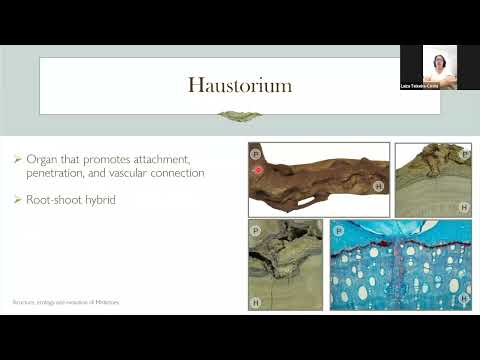Description:
Explore the fascinating world of mistletoes in this 44-minute lecture by Dr. Luiza Teixeira-Costa for the Society for Experimental Biology. Delve into the structure, ecology, and evolution of these parasitic plants, examining their unique characteristics and ecological importance. Learn about the five independent evolutions of the mistletoe lifestyle within the order Santalales, resulting in 83 genera and over 1,500 species. Discover the convergence and variation among mistletoes, focusing on their distinctive morphology and physiology. Investigate parasite-host interactions, species plasticity, and the impact of global climate and land-use changes on mistletoe populations. Gain insights into mistletoe diversity, morphogenesis, distribution, and historical significance. Examine the anatomy of parasitic roots, colonization processes, and endophytic tissue development. Understand the differences between mistletoes and epiphytes, and explore concepts such as wood roses, classroom unions, and phylogenetic analysis. Conclude with discussions on mistletoe defense mechanisms, hormones, and their ability to germinate autonomously.
Read more

Christmas Tradition - Structure, Ecology and Evolution of Mistletoes
Add to list
#Conference Talks
#SEB (Society for Experimental Biology)
#Science
#Biology
#Physiology
#Ecology
#Art & Design
#Visual Arts
#Botany
#Evolutionary Biology
#Data Science
#Bioinformatics
#Phylogenetic Analyses
#Humanities
#Linguistics
#Morphology